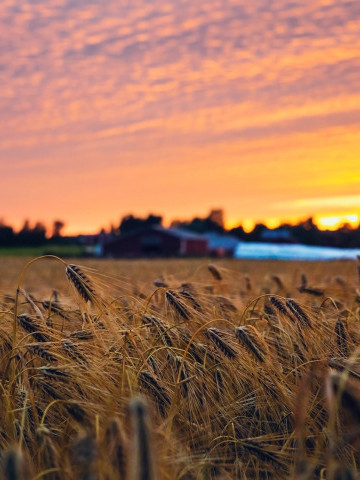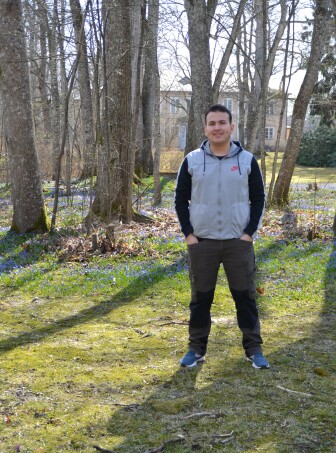
Bioekonomi
I bloggen Bioekonomi får du veta mer om Yrkeshögskolan Novias forsknings-, utvecklings- och innovationsverksamhet inom forskningsområdet systemomställning för att bygga resiliens. Majoriteten av personalen finns huvudsakligen i Raseborg. Här bildar forskare, projektarbetare, lärare, studerande och administrativ personal en dynamisk helhet. På vår blogg kan du läsa om vilka vi är, vad vi gör och om våra resultat. Välkommen!
Vid frågor eller feedback kontakta bloggens administratör Heidi Barman-Geust (Heidi.barman-geust(a)novia.fi)
Vi följer CC BY 4.0 om inget annat nämns.
Systemic Transformation to Build Resilience is one of Novia University of Applied Sciences six' research areas. The activity is mostly located in Raseborg, in southern Finland. As a dynamic unity, our researchers, project workers, teachers, students and administrative personnel produce versatile results in research, development and innovation. We blog about who we are, what we do, what our conclusions are, and how we implement them. Welcome!
If you have questions, please contact Heidi Barman (Heidi.barman-geust(a)novia.fi)
We folllow CC BY 4.0 if nothing else is stated.
Matregion Nyland develops GIS-maps for farming in Uusimaa

Eduardo Grisales-Jaramillo, a former student of Sustainable Coastal Management at Novia, is currently working in the project Matregion Nyland. He makes terroir maps for cultivating areas in Uusimaa.
- They show a traffic-lights classification in terms of how well suited different areas are for growing new potatoes, apples, pasture raised meat and heritage grains, on a topographic map. The areas suited for cultivation are colored according to parameters given by the properties of the land at hand, for instance it´s suitability for growing potatoes.
The aim of making such maps is to find areas with high potential for the crops that are being researched within the project. Eduardo maps agricultural areas that already are in use, and areas that potentially could be used as pastures.
- Making a map, you start out by studying research from other areas in the northern hemisphere in the same context, like Canada, to see what parameters they take into account. You also collect data on the area at hand, regarding the temperatures and soil structure, the elevation, steepness, and directions of slopes. New potatoes, for instance, like a loamy composition of 40-50% sand, 20% rocky soil and 20-30% clay, which makes them quite flexible compared to some other crops. They like a slope of 0 to 5%, and the land should be facing south or south-east.
After looking at the parameters of the area itself, the surroundings are taken into account: how close the area is to water, the elevation of the land between the crops and the water body , the mean and variation of the land surface temperature. The water body can be a creek, river, lake or a sea, as long as it is bigger than two square kilometers, in order to create a microclimate. Lohja has good conditions for this, thanks to the big lake, and so does the coast.

Geographical data caught Eduardo´s interest during his studies at Novia, as he wrote his thesis on potatoes. Originally from Colombia, Eduardo has a degree in economics and worked in Helsinki for about two years.
- But I got tired of it and wanted to do something new. I also applied for master studies at the Aalto university, but chose Novia, since learning about sustainable coastal management was more in line with what I wanted to do. My internship after my studies was based on geographical data as well.
There are several programs to use for making GIS-maps, but Eduardo found ArcGIS Pro and Rstudio particularly user friendly, also for users who aren´t programmers. It´s easy to load the data of a certain period from the Metheorological Institute, and to adjust it in the program.
- The results are almost ready now and together with the project leader Christos Granqvist, I´ll grade the lands according to how many parameters each of them fits, into four categories, ranging from very suitable to not suitable at all.
The teroir maps of Matregion Nyland will soon be presented together with other results of the project, which is in its finishing phase.
Texten har granskats av Novias campusredaktion och publicerats 30.7.1.2021.
![]()
Bioekonomi
Blogginlägg som är granskat av Novias redaktionsråd är utmärkta med nyckelordet "Granskat inlägg".
Vi följer CC-BY 4.0 om inget annat nämns.
Ansvarsfriskrivning: Författaren/författarna ansvarar för för fakta, möjlig utebliven information och innehållets korrekthet i bloggen. Texterna har genomgått en granskning, men de åsikter som uttrycks är författarens egna och återspeglar inte nödvändigtvis Yrkeshögskolan Novias ståndpunkter.
Disclaimer: The author(s) are responsible for the facts, any possible omissions, and the accuracy of the content in the blog.The texts have undergone a review, however, the opinions expressed are those of the author and do not necessarily reflect the views of Novia University of Applied Sciences.